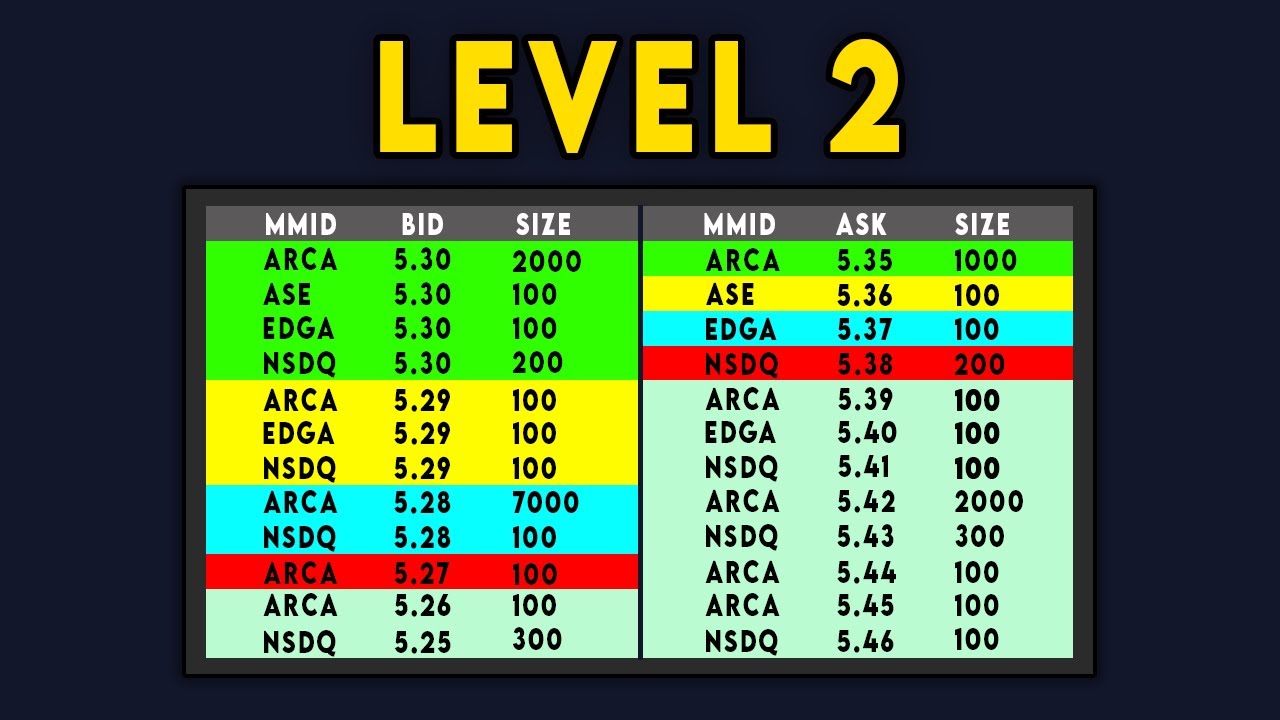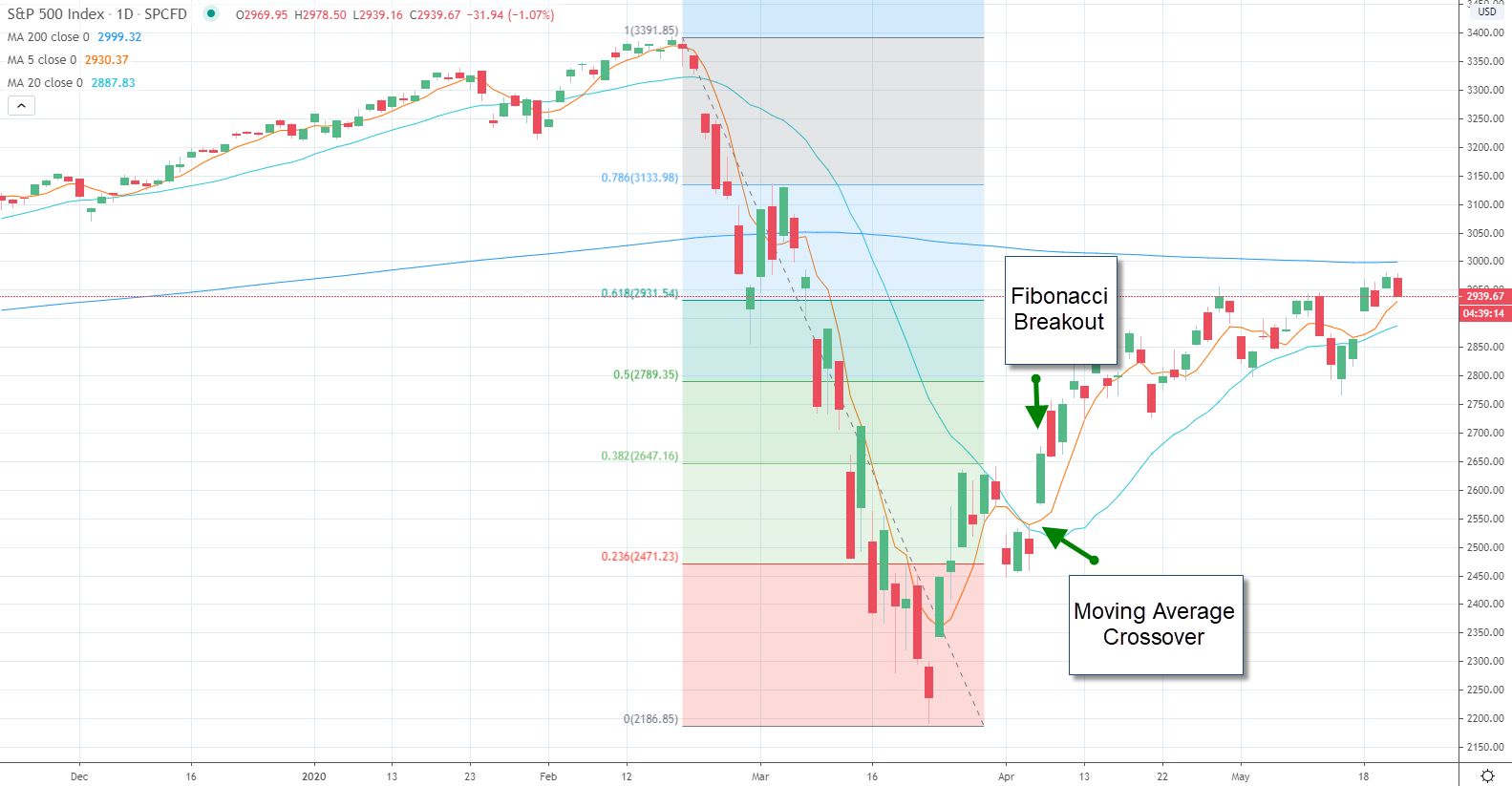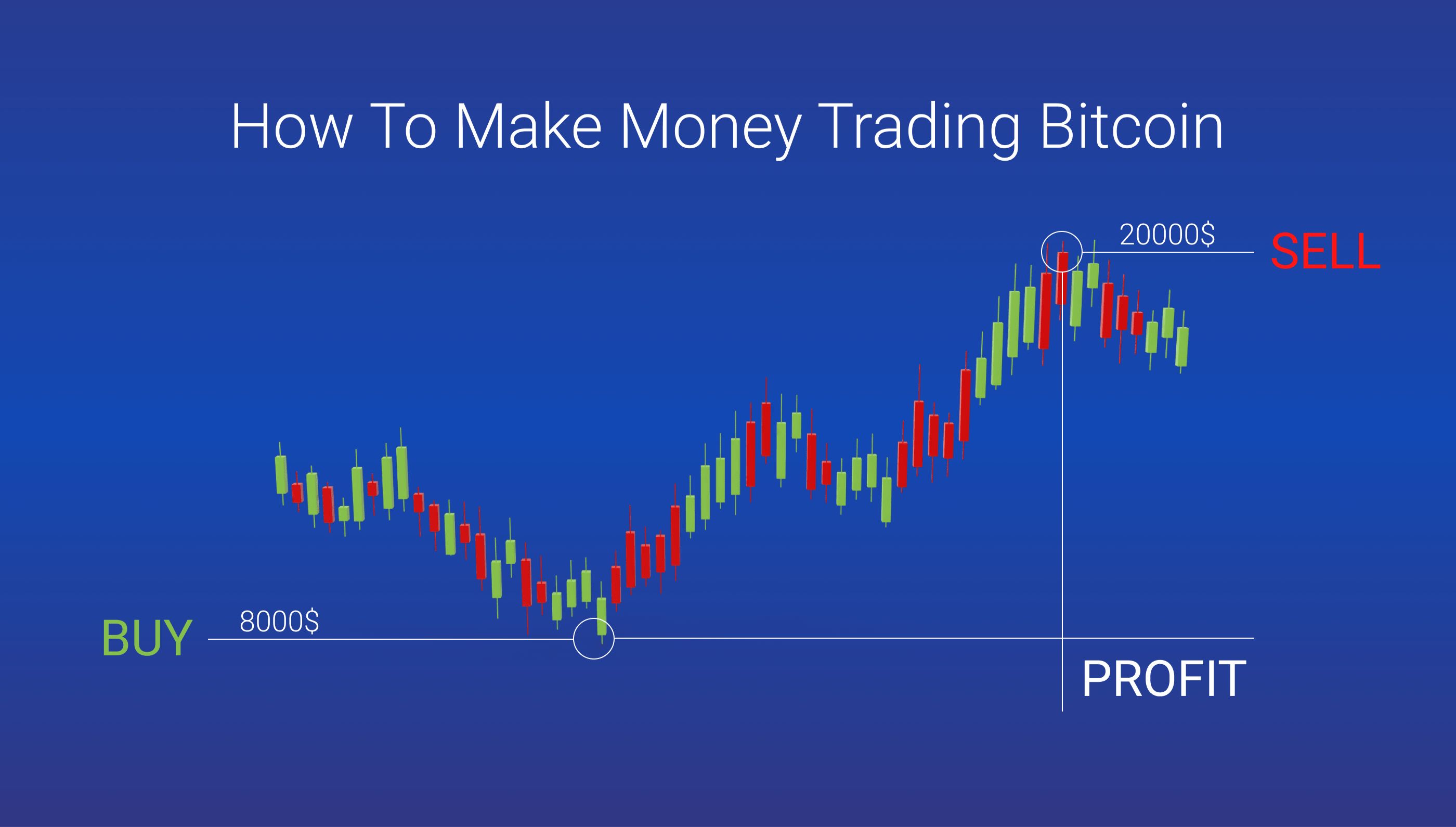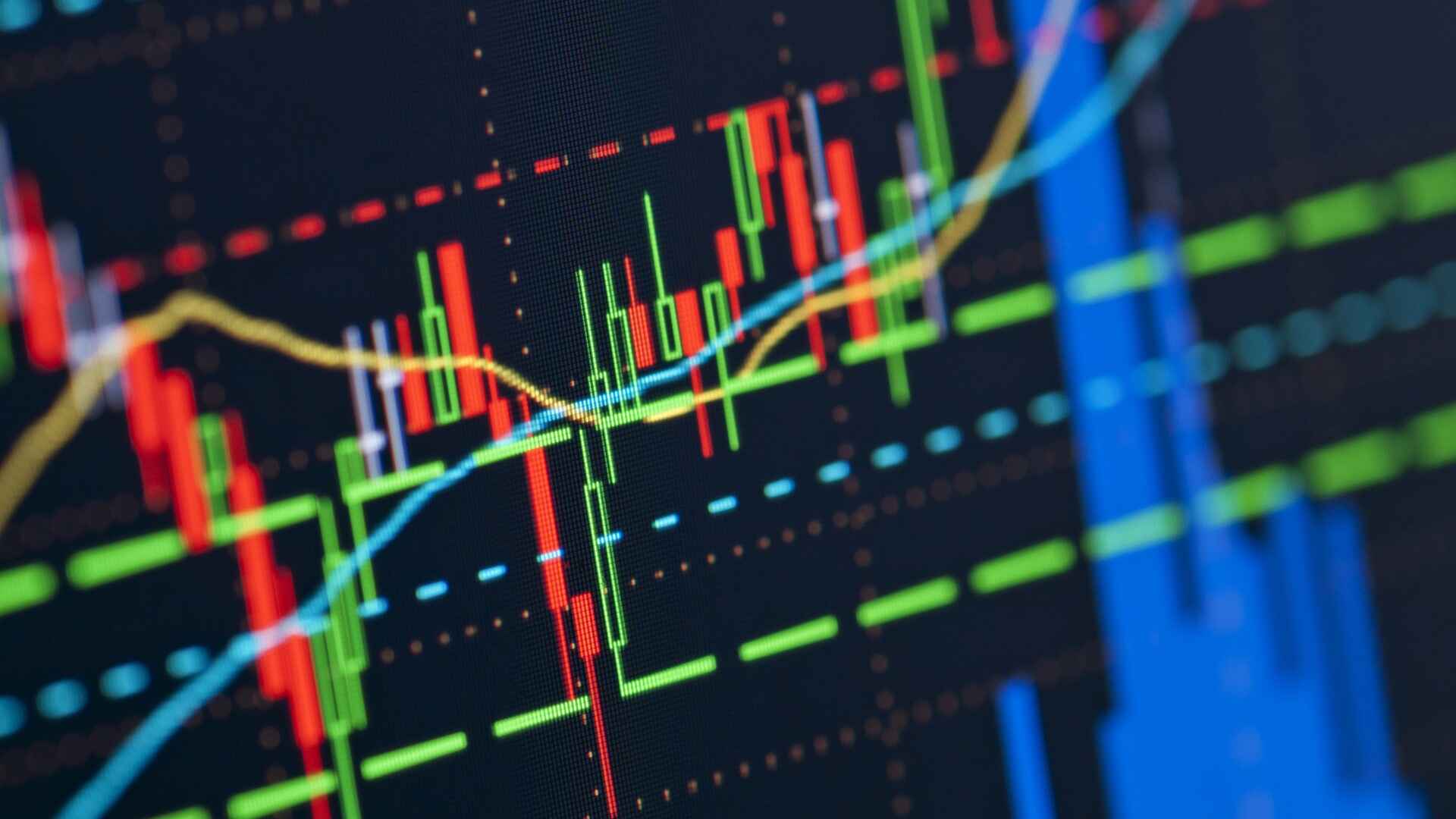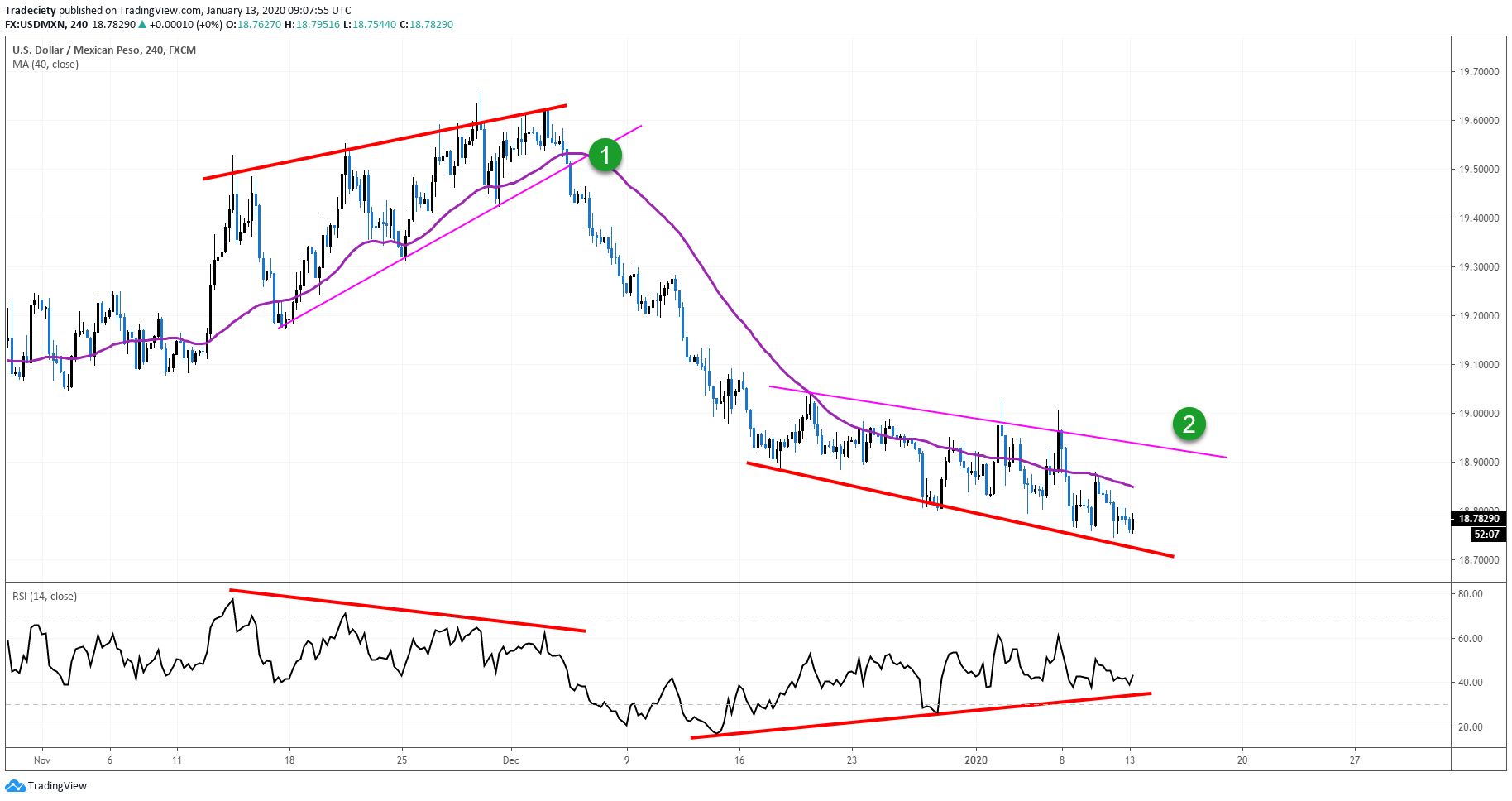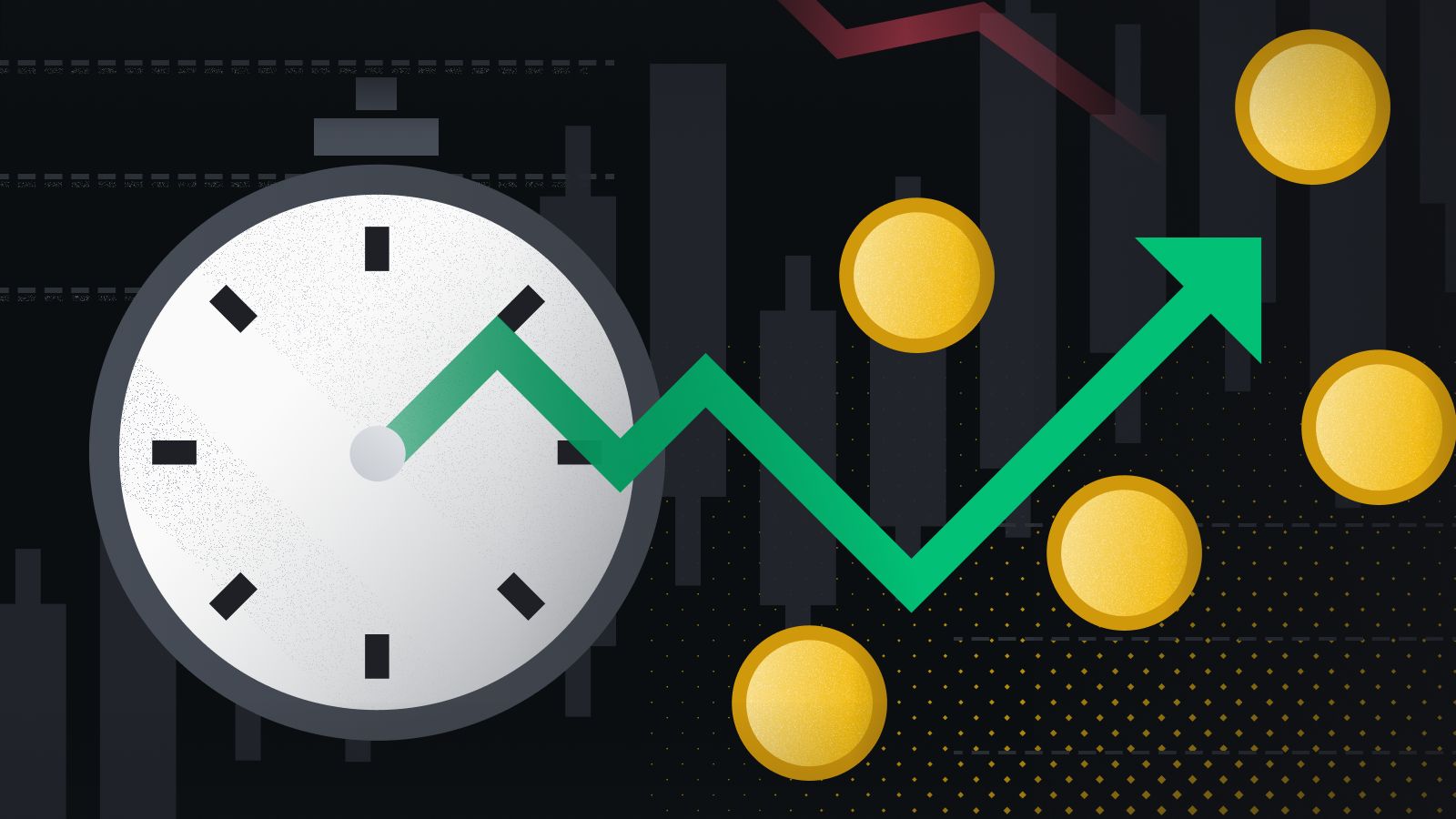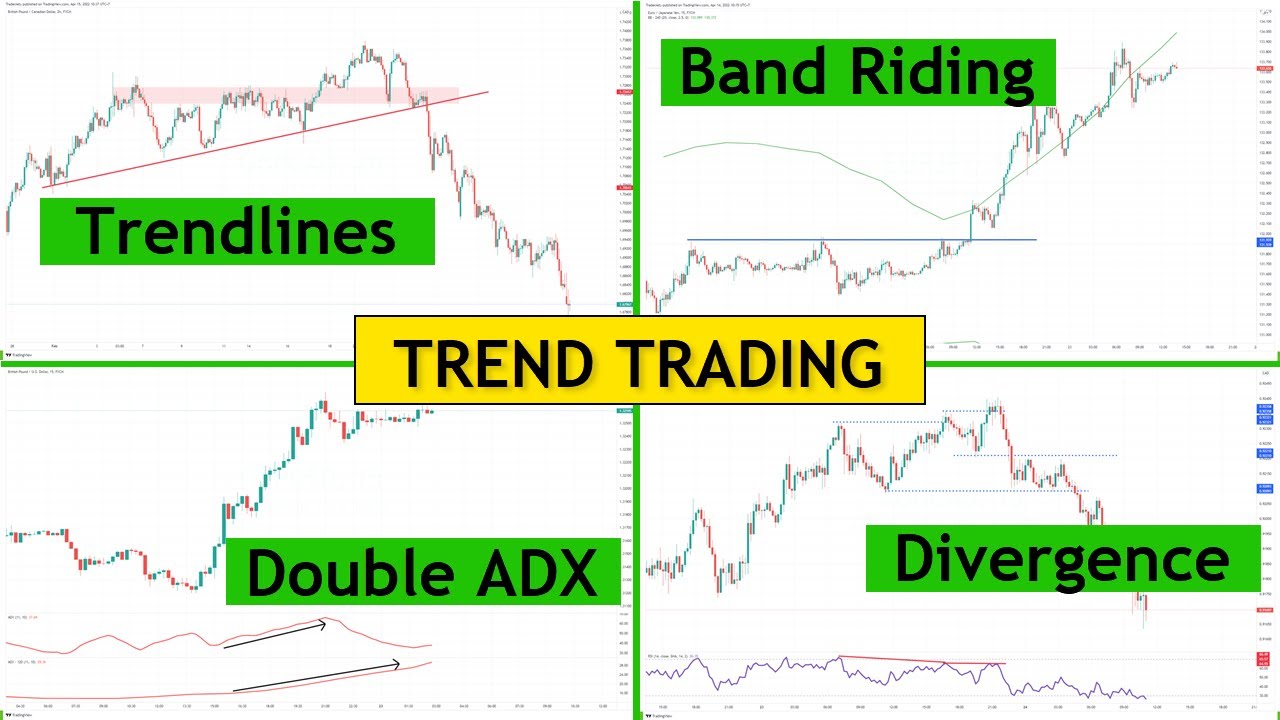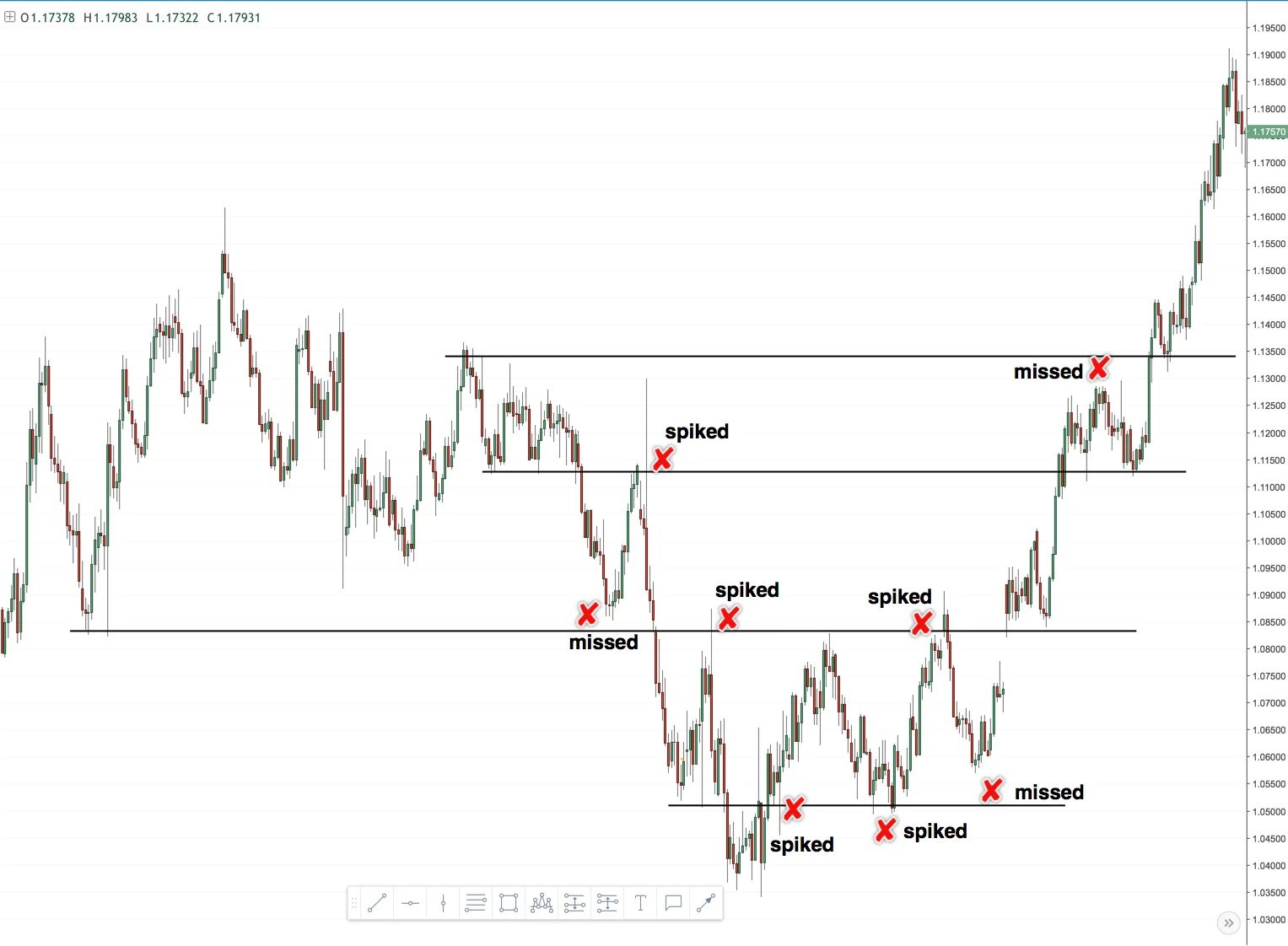Introduction
Welcome to the world of level 2 trading, where investors have access to deeper insights and a more detailed view of the market. Level 2 trading is an advanced trading technique that provides real-time market data, allowing traders to make more informed decisions. Unlike level 1 trading, which only provides basic information such as bid and ask prices, level 2 trading offers a more comprehensive picture of the market, including the number of buyers and sellers at different price levels.
Level 2 trading is particularly useful for active traders and day traders who are looking to gain an edge in the market. By being able to see the order book and the depth of the market, traders can better gauge supply and demand dynamics and identify potential trading opportunities. This level of detail can provide valuable insights into market trends and allow traders to spot patterns and make more accurate predictions.
With level 2 trading, traders can also see the size and liquidity of the orders in the market. This information can help traders determine the strength or weakness of a stock’s price movement and make more informed decisions about when to enter or exit a trade. By understanding the supply and demand dynamics at different price levels, traders can anticipate potential price movements and adjust their trading strategies accordingly.
Level 2 trading is not limited to stocks; it can also be applied to other financial instruments such as options, futures, and forex. The ability to access real-time market data and the order book depth across different markets and instruments gives traders the flexibility to diversify their portfolios and explore multiple trading opportunities.
In the following sections, we will delve deeper into level 2 trading, discussing its key features, how it differs from level 1 trading, the benefits it offers, strategies to effectively use level 2 quotes, as well as the risks and limitations associated with this trading technique. So, let’s dive in and explore the exciting world of level 2 trading!
What is Level 2 Trading?
Level 2 trading, also known as market depth or order book trading, is a method that provides traders with additional market data beyond what is available in level 1 trading. While level 1 quotes display the best bid and ask prices for a particular security, level 2 trading goes a step further by showing the full order book, including the number of buyers and sellers at different price levels.
Level 2 trading provides a more detailed view of the market, allowing traders to see the supply and demand dynamics. It shows the bids and asks in the order queue, allowing traders to observe the size and liquidity of the orders at different price levels. This information can help traders make more informed decisions and identify potential trading opportunities.
The data in level 2 trading is presented in a hierarchical format, with the best bid and ask prices at the top, followed by the subsequent price levels. Traders can see the number of shares or contracts available at each price level, providing a clear view of the market depth. This depth of information allows traders to gauge the strength or weakness of buying and selling pressure and assess the potential direction of a security’s price movement.
Level 2 trading is commonly used by day traders and active traders who engage in short-term trading strategies. By having access to real-time market data and a detailed order book, these traders can quickly react to market changes and take advantage of short-term price fluctuations.
It’s important to note that level 2 trading is not available to all traders. It is typically offered by online brokers or direct market access (DMA) platforms. Traders need to subscribe to level 2 data, which may come with additional fees, to access this advanced trading feature.
In the next section, we will explore how level 2 trading differs from level 1 trading, and why it can be a valuable tool for traders seeking deeper insights into the market.
How Does Level 2 Trading Differ from Level 1 Trading?
Level 2 trading differs from level 1 trading in terms of the depth and granularity of market data provided to traders. While level 1 trading displays the best bid and ask prices, level 2 trading offers a more comprehensive view of the market by showing the full order book.
Level 1 trading provides basic information such as the current bid and ask prices, the last traded price, and the trading volume. This information is typically available to all traders and can be easily accessed through various trading platforms or financial websites. Level 1 data is often sufficient for casual traders or long-term investors who are not actively monitoring market depth or executing trades frequently.
On the other hand, level 2 trading provides more detailed information about the market depth. It shows all the bids and asks in the order book, along with the number of buyers and sellers at each price level. Traders can see the size and liquidity of the orders, which helps gauge the supply and demand dynamics for a particular security.
Level 2 trading allows traders to observe the order flow and track the accumulation or distribution patterns of a stock. By analyzing the placement and movement of orders in the order book, traders can gain insights into the market sentiment and anticipate potential price movements.
Additionally, level 2 trading provides traders with the ability to place orders at specific price levels within the order book. This means that traders can choose to submit their orders at a particular bid or ask price, rather than simply placing a market order based on the best available price. This level of control can be beneficial for traders who want to execute their trades at precise price levels.
Level 2 trading is particularly valuable for active traders and day traders who rely on short-term price movements to generate profits. By having access to more detailed market data, traders can make more informed decisions and react quickly to changing market conditions.
In the following sections, we will delve deeper into the benefits of level 2 trading and explore how to effectively use level 2 quotes in trading strategies. Stay tuned!
The Benefits of Level 2 Trading
Level 2 trading offers several key benefits that can give traders a competitive edge in the market. By providing a more detailed view of the order book and market depth, level 2 trading allows traders to make more informed decisions and potentially capitalize on profitable trading opportunities. Let’s explore some of the benefits of level 2 trading:
- Enhanced Market Transparency: Level 2 trading provides traders with visibility into the order book, allowing them to see the bids and asks at different price levels. This transparency enables traders to better understand the supply and demand dynamics in the market and make more informed trading decisions.
- Real-time Market Data: Level 2 trading offers real-time market data, which allows traders to see the most up-to-date information on bid and ask prices, as well as the number of buyers and sellers at different price levels. This real-time data is crucial for traders who rely on quick decision-making and want to stay ahead of market movements.
- Depth of Market Insights: With level 2 trading, traders can access a more granular view of the market depth. They can see the size and liquidity of orders at each price level, helping them gauge the strength of buying or selling pressure. This depth of market insights can assist traders in identifying potential support and resistance levels, as well as spotting trends and patterns.
- Improved Order Execution: Level 2 trading allows traders to place orders at specific price levels within the order book. This means that traders can target their desired entry or exit prices more precisely, potentially improving order execution and reducing slippage.
- Opportunity to Identify Trading Patterns: By closely monitoring the order flow and market depth, level 2 traders can spot trading patterns and anomalies. This can help them identify potential buying or selling opportunities, as well as gain insights into market sentiment and overall market health.
It’s important to note that while level 2 trading offers valuable insights, it also requires a certain level of experience and expertise to interpret and utilize the data effectively. Traders should always conduct thorough research, practice risk management, and continuously refine their trading strategies.
In the next section, we will delve into how to effectively use level 2 quotes in trading strategies, allowing you to maximize the benefits of level 2 trading.
How to Use Level 2 Quotes
Level 2 quotes can provide valuable insights and help traders make more informed decisions in their trading strategies. By understanding how to effectively use level 2 quotes, traders can capitalize on market opportunities and potentially improve their trading outcomes. Here are some key considerations on how to utilize level 2 quotes:
- Identify Support and Resistance Levels: Level 2 quotes can help traders identify potential support and resistance levels on the order book. By analyzing the depth of the market, traders can observe regions where significant buyers or sellers are clustered, indicating strong levels of support or resistance. These levels can be used to determine entry and exit points for trades.
- Monitor Order Flow: Level 2 quotes allow traders to observe the order flow and track the movement of orders within the order book. By monitoring the flow of buy and sell orders, traders can gain insights into market sentiment and potential shifts in supply and demand dynamics. This information can help identify potential trading opportunities and gauge market strength.
- Spot Accumulation or Distribution: Level 2 quotes can reveal accumulation or distribution patterns, indicating whether institutions or large traders are buying or selling a particular security. By closely monitoring the placement and movement of orders, traders can detect signs of either accumulation or distribution, which can serve as an indicator of potential price movements and market direction.
- Assess Liquidity: Level 2 quotes provide information on the size and liquidity of orders at different price levels. Traders can use this data to assess market liquidity and determine how easily a security can be bought or sold at a desired price. Higher liquidity generally results in tighter bid-ask spreads and greater order execution efficiency.
- Combine with Technical Analysis: Level 2 quotes can be used alongside technical analysis to validate or confirm potential trading signals. By integrating level 2 data with chart patterns, indicators, or other technical analysis tools, traders can enhance their trading decisions and improve their overall trading strategies.
It’s important for traders to understand that level 2 quotes provide a snapshot of the market depth at a specific point in time. The order book can change rapidly, and it’s crucial to adapt to market conditions accordingly. Traders should also consider other factors such as news events, market trends, and overall market sentiment to make well-rounded trading decisions.
By incorporating level 2 quotes into their trading strategies and combining them with other relevant market information, traders can gain deeper insights and potentially increase their chances of success in the market.
In the next section, we will discuss various level 2 trading strategies that traders can consider incorporating into their trading plans.
Level 2 Trading Strategies
Level 2 trading offers a wealth of information that can be utilized in various trading strategies. By leveraging the insights provided by level 2 quotes, traders can develop effective strategies to navigate the market and potentially generate profits. Here are some popular level 2 trading strategies:
- Scalping: Scalping is a short-term trading strategy that aims to capitalize on small price movements. Level 2 quotes can be used to identify areas of high liquidity, allowing traders to quickly enter and exit trades for small gains. Traders may look for stocks with tight bid-ask spreads and high trading volumes to execute quick-scalping trades.
- Iceberg Orders: Iceberg orders are large block orders that are hidden from the order book. Traders can use level 2 quotes to identify signs of iceberg orders, such as unusual order sizes at specific price levels. This strategy involves tracking the order flow and anticipating the presence of hidden liquidity, allowing traders to ride the coattails of large institutional trades.
- Breakout Trading: Breakout trading involves identifying key support and resistance levels and entering trades when the price breaks out of these levels. Level 2 quotes can assist traders in confirming breakout opportunities by observing the order book’s depth and liquidity. Traders may look for increased order activity and volume near breakout levels to validate a potential breakout trade.
- News Trading: Level 2 quotes can be valuable for news trading strategies, particularly during highly volatile times. Traders can use level 2 data to gauge the market’s reaction to news events by observing changes in the order book, bid-ask spreads, and liquidity levels. By combining level 2 quotes with real-time news feeds, traders can seize opportunities and make informed trading decisions.
- Pairs Trading: Pairs trading involves identifying and trading two correlated securities. Level 2 quotes can be useful in pairs trading strategies to assess the relative strength and trading volumes of the two securities. Traders can compare the order book depth and liquidity of each security to identify potential discrepancies in price and execute trades based on the expected convergence or divergence of the two securities.
It’s important to note that each trading strategy carries risks, and traders should always conduct thorough research and practice proper risk management. Additionally, traders should spend time familiarizing themselves with the level 2 trading interface of their chosen trading platform to effectively navigate and interpret the provided data.
By incorporating level 2 trading strategies into their trading plans, traders can leverage the full potential of level 2 quotes and increase their chances of success in the market.
Next, let’s explore the risks and limitations associated with level 2 trading.
Risks and Limitations of Level 2 Trading
While level 2 trading provides valuable insights, it also comes with certain risks and limitations. It’s important for traders to be aware of these factors to make informed decisions and manage their trading strategies effectively. Here are some risks and limitations associated with level 2 trading:
- Partial Order Visibility: Level 2 quotes only reveal part of the order book and provide a snapshot of the market depth at a specific moment. As a result, traders may not have complete visibility into all the orders in the market, including hidden or iceberg orders. This limitation can impact the accuracy of trading decisions, especially when relying solely on level 2 quotes.
- Market Manipulation: Level 2 trading data can sometimes be manipulated by market participants. Traders with large order sizes may place fake or spoof orders to create false market depth impressions. This can mislead other traders and impact their trading decisions. It’s crucial for traders to exercise caution and use additional analysis to confirm level 2 quote signals.
- Information Overload: Level 2 trading can provide a vast amount of data, which can overwhelm traders, especially those who are new to this type of trading. Interpreting and analyzing the information in real-time can be challenging. Traders need to develop the skills and experience to effectively filter relevant information and make timely decisions.
- Volatility and Liquidity Risks: Level 2 quotes reflect the current market conditions, including volatility and liquidity levels. During highly volatile periods or illiquid markets, the order book may not accurately represent the true supply and demand dynamics. Traders need to consider market conditions and adjust their trading strategies accordingly to mitigate the risks associated with volatile or illiquid markets.
- Execution Risks: While level 2 trading provides insights into the depth of the market, there are no guarantees of trade execution at desired price levels. The order book may quickly change, resulting in price slippage or difficulty in executing trades. Traders need to exercise caution and be prepared for potential execution challenges, especially when large order sizes are involved.
It’s crucial for traders to thoroughly understand the risks and limitations associated with level 2 trading and take appropriate measures to mitigate these risks. This includes having a solid understanding of risk management techniques, continuously monitoring market conditions, and avoiding over-reliance on level 2 quotes as the sole basis for trading decisions.
By being aware of these risks and limitations, traders can navigate the level 2 trading environment with caution and make well-informed decisions to maximize their chances of success.
In the final section, we will wrap up our discussion on level 2 trading.
Conclusion
Level 2 trading provides traders with a deeper level of market insight and real-time data, empowering them to make more informed trading decisions. By accessing the full order book and market depth, traders can gauge supply and demand dynamics, identify trading opportunities, and potentially capitalize on short-term price movements.
In this article, we explored the concept of level 2 trading and its key features. We discussed how level 2 trading differs from level 1 trading, highlighting the benefits it offers, such as enhanced market transparency, real-time data, and improved order execution.
We also delved into the practical aspects of level 2 trading, exploring how to effectively use level 2 quotes and implement various trading strategies. From scalping and identifying support and resistance levels to news trading and pairs trading, level 2 quotes can be incorporated into diverse trading approaches.
However, it’s important to be aware of the risks and limitations associated with level 2 trading. While level 2 quotes provide valuable insights, partial order visibility, market manipulation, information overload, and execution risks should be carefully considered and managed.
In conclusion, level 2 trading can be a powerful tool in the hands of experienced and disciplined traders. By utilizing level 2 quotes effectively, incorporating them into comprehensive trading strategies, and managing the associated risks, traders can gain a competitive edge in the market and potentially improve their trading outcomes.
As with any trading approach, continuous learning, practice, and risk management are essential. Traders should invest time in understanding the dynamics of level 2 trading, stay abreast of market developments, and refine their strategies accordingly.
Now that you have gained a better understanding of level 2 trading, it’s time to explore and harness its potential in your own trading journey.







